Sydney Language Solutions Indonesian Language Meetup 9/9/2012
Last Sunday, Sydney Language Solutions has successfully arranged an Indonesian Meet up. The main purpose of this meet up is to introduce our language centre to everyone in Sydney area especially for those who are interested in learning new languages such as Bahasa Indonesia. The meet up group was held in SHALOM Restaurant. The meet up started at 12 noon and finished at approximately 2 PM. We tried 4 different dishes with different level of spiciness. The main idea of sharing the food is to get us closer to each other.
5 people attended the lunch gathering. Most of the participants came from different backgrounds and nationalities which brought the gathering into a new level. The gathering is not only about learning new language, but more about sharing ideas about culture of different countries. For me personally, since I am Indonesian, it is very exciting to hear other people from other nationality talks about their experience in Indonesia. They are also interested in knowing my point of view as an international resident in Australia and about how I feel about this country
The atmosphere of the gathering became more relaxed and the talks flowed quite well. Michael Kiddle, one of SLS’ student who attended the meet up initiated several topics of conversation. Starting from his experience and reason to learn Bahasa Indonesia, his curiosity on how Indonesian people sit back and relax, as well as tourist attraction in Indonesia.
Overall, I believe that the meet up last Sunday was a great success even with a little number of attendees. With initiatives and togetherness, we can be bigger and meet up again next time. So feel free to join us at http://www.meetup.com/SydneyIndonesianLanguage/
– Tirto
Learning Korean from Korean drama O.S.T : Winter Child (겨울 아이)
Since the song ‘Winter Child’ was first sung by JongYong, Lee in 1990, this song has been remade by many singers. ‘Winter Child’ was again highlighted by Suzy, member of Miss A. Suzy sang the song in Dream High which is very popular drama in Korea. The lyrics of the song are so lovely and beautiful. So, the song is sometimes sung for a birthday song for people born in the winter.
Shall we learn this song?
겨울에 태어난 아름다운 당신은
Gyeoure taeeaonan areumdaun dangsineun
(Beautiful you born in the winter)
눈처럼 깨끗한 나만의 당신
nuncheoreom ggaekkeotan namane dangsin
(My darling you white as the snow)
겨울에 태어난 사랑스런 당신은
Gyeoure taeeaonan sarangseureon dangsineun
(Lovely you born in the Winter)
눈처럼 맑은 나만의 당신
nuncheoreom malgeun namane dangsin
(My darling you pure as the snow)
하지만 봄 여름과 가을 겨울
hajiman bom, yeoreumgwa gaeul gyeoul
(But ….spring, summer, fall and winter)
언제나 맑고 깨끗해
eonjena malggo ggaekketae
(You’re always pure and lovely)
겨울에 태어난 아름다운 당신은
Gyeoure taeeaonan areumdaun dangsineun
(Beautiful you born in the winter)
눈처럼 깨끗한 나만의 당신
nuncheoreom ggaekkeotan namane dangsin
(My darling you white as the snow)
생일 축하합니다 생일 축하합니다
sangil chukkahamnida *3 (Happy birthday)
생일 축하합니다 당신의 생일을
dangsine sangireul
Happy birthday to you. (Happy birthday to you.)
There are four seasons in Korea. 봄(spring) 여름(summer) 가을(fall)and 겨울(winter). If you were born in the winter, you can say “저는 겨울에 태어났어요 (jeoneun gyeoule ttaeenatsseoyo)”
-에 is a time marker. 저는 여름에 태어났어요. It means “I was born in the summer.” Then, “in the spring” becomes “봄에”. 태어났어요 is the past tense which means “were/was born”
당신(dangsin) is an honorific expression of “너(neo/ you)” but you need to be aware of how to use this word properly. Because it is used for the most honorific title or poetic expression, you may be confused how to suitably use the word. In this song, 당신 is used for the kind of poetic expressions. If you improperly use the title “당신” to the elder, you would seem rude on the contrary.
How can you say “Happy birthday!” in Korean? It is “생일 축하합니다.” 생일(sangil) means birthday and 축하합니다(chukkahamnida) means congratulations on~. You can use this expression in some ways. For example, “Congratulations on your graduation” is 졸업 축하합니다 in Korean. 졸업(joreop) is graduation. You can put any word in front of 축하합니다. So, the basic form is something 축하합니다. Instead of 졸업, 결혼 (gyeoron, marriage) can be put. 결혼 축하합니다. The form of –합니다 is formal polite sentence so normally, you may say just with 축하해요. Altogether, 생일 축하해요. 졸업 축하해요. 결혼 축하해요. Those expressions are still polite.
You can enjoy 겨울아이 (Winter Child) on Youtube.
http://www.youtube.com/watch?v=nGNS2F1fb5c&feature=related
Is it so interesting to learn Korean form Korean OST and songs? Next time, let’s learn another song and useful expressions. 감사합니다
Korean teacher, Sarah Yong.
Go-Stop_ A national card game in Korea
Go-Stop (고스톱) is a Korean card game. Go-Stop is also known as Godori (고도리), the name of a winning move in the game, Hwatu (화투) as this is the name of the cards used to play the game and also as Matgo (맞고), the latter implicating that only two players are playing.
Go-Stop is played with hanafuda cards using a different point system. The cards are referred to as hwatu (화투) in Korean. In addition, a deck of Korean hwatu cards usually includes bonus cards. Most households own a deck of hwatu and they are as common in Korea as the standard 52 deck cards are in the Western world.
Typically, there are two or three players, although there is a variation where four players can play. The general point of this game is to score a minimum number of points, usually three or seven, and then call a “Go” or a “Stop” (this is where the name of the game is derived from). When a “Go” is called, the game continues, and the amount of points or money is first increased, and then doubled, tripled, quadrupled and so on, though the latter being very rare. If a “Stop” is called, the game ends and the winner collects the winnings.
Typical games between experienced players move very quickly.
오빤 강남 스타일 The new mainstream of K-pop
Korean-pop rapper Psy’s video “Gangnam Style” is taking over the world.
Gawker suggested“Gangnam Style” may be the best music video of the year. American auto-tune aficionado T-Pain tweeted, “Words cannot even describe how amazing this video is…” And Scooter Braun, who manages pop-munchkins Justin Bieberand Carley Rae Jepsen tweeted, “HOW DID I NOT SIGN THIS GUY!?!??!… GANGNAM STYLE!!!! #THEGREATEST. “
The video features Psy, also known as Park Jae-sang, in various upscale locations doing a funky horse riding dance. A couple of famous Korean comedians make cameo appearances in the video, so does a member of the Korean pop group 4Minute–she’s the girl with the red hair wearing the blouse decorated with billiard balls.
The video became a huge online hit in Korea about a week before it reached viral success throughout the world, said Kevin Allocca, YouTube trends manager. As of Thursday the video was one of the most shared videos in South Korea, as well as the U.S., U.K., Canada, Australia, Singapore and Sweden.
It’s not just the Olympics that brings together the citizens of the world, people. It’s also completely insane, hilarious, high-energy music videos.
Do you Know Mike Sui?
There are many interesting stories happened in your journey of Mandarin learning.
Recently, Mike Sui is very popular among Chinese learners. Have a look at his performance at the bar.
He imitated different accents in this short video:
Hope you enjoy your learning with Our SLS excellent teachers!
Historical and Cultural Destinations in Hong Kong
As one of the four Asian Dragons, Hong Kong is notable as a city of modernization and pompousness where leads as the centre of international financial transaction, shopping heaven and the birth place of many world-wide well-known actors such as Bruce Lee, Jackie Chan and Chow-Yun Fa. Today, I want to take you on a quick tour to three historical and cultural destinations in Hong Kong which you should not miss if you plan to visit Hong Kong soon:
1. The Tian Tan Buddha (天壇大佛)
Located on the largest island of Hong Kong – Lantau Island, The Tan Tian Buddha, which is known as one of the five biggest Buddha statues in China, is a must- see attraction. The Buddha is a-250-metric ton-bronze statue with the height of 112-foot sitting solemnly on a lotus throne. Completed in 1993, this statue is constructed upon a three-platform altar and visitors have to climb 268 steps to reach it. This Tian Tan Buddha statue represents the connection between people’s beliefs and religion, human and the universe
2. Hong Kong Global Geopark of China (中國香港世界地質公園)
Situated in the East and Northeast New Territories, the area of the Hong Kong Global Geopark of China equals to 5000 hectares. It features 8 areas which form across the Sai Kung Volcanic Rock Region and the Northeast New Territory Sedimentary Rock Region. In 2011, the Geopark was admitted as a member of the Global Geoparks Network by UNESCO.
3. Tin Hau Temple in Joss House Bay (大廟灣天后廟)
Built in 1266, Tin Hau Temple in Joss House Bay is famous as the largest and oldest Tin Hau Temple in Hong Kong, also known as the Big Temple (大廟). On the Tin Hau’s birthday (on 23rd of March of Lunar calendar), many devotee and visitors come to pray for their safety and success. Unfortunately, after being repaired for several times in 1840, 1877 and 1962, the temple has lost its original shape.
Vietnamese Dipping Fish Sauce
As how popular wasabi is to Japanese, ketchup is to French and plum sauce to Chinese, when people mention Vietnamese dishes, fish sauce is the top one bear in their minds. It has an indispensable role for much Vietnamese cuisine since it can be use as an ingredient for cooking or an element to make dipping sauce.
Vietnamese dipping fish sauce is a mixture made from fish sauce, lime juice, minced garlic, chilies, sugar and water (or coconut juice). As fish sauce is salty, lime juice is sour, garlic and chilies are spicy and coconut juice and sugar are sweet, this dipping sauce symbolizes for a life which has bitterness, pungency, gladness and happiness. While we cannot predict what taste of our lives is, the taste of this sauce is various depending on personal preference.
The taste of the dipping fish sauce is different by each region. While Northern Vietnamese people prefer adding broth cooked by pork and penaeid shrimp, people in the central part is in favor with the salty taste by adding less water. Moreover, people from the South choose coconut juice instead of water.
Next, I will show you how to make Vietnamese dipping fish sauce: firstly, dissolve the sugar and water is the prior step. Next, add lime juice or vinegar to the mixture and followed are minced garlic and chilies. Finally, fish sauce is poured into the mixture to complete a delicious and healthy dipping sauce.
Now, you have your own Vietnamese dipping fish sauce! Well done!!!
Áo dài and nón lá
(aodai and palm-leaf conical hat)
Whoever has visited Vietnam would be impressed by the image of girls dressed in aodai. Conventionally, the aodai is separated into two parts: the fitting dress with high collar which is long and loosen the body; the pair of trousers which is ankle-length. The price to possess an aodai is different from its fabrics and the including accessories. Tailors prefer the fabrics which do not easy to crush like silk and synthetic to ensure the comfortableness for people who wear them. The original version of aodai was stitched up in 1744 when everyone was decreed to dress an ensemble by the king Vu Vuong of the Nguyen Dynasty. While áo dài is the monopoly garment for woman, áo gấm is the one for men.
Similarly, nón lá (palm-leaf conical hat) which is stitched from palm leaves and Moc’s or bamboo’s bark also symbolizes for Vietnamese custom. It represents the hard-working but pleasant life of people from paddy field to fishing field. Tourists can experience the process of making nón lá in Chuong village which locates 30km south west of Ha Noi. Nón lá is used to protect farmers from the fierce sunshine or as a souvenir for foreigners to memorize the time they spend in Vietnam.
The image of Vietnamese lady wearing nón lá and áo dài is a symbol of beauty which tourists will never forget.
South Korean Men and Their Mandatory Military Service
Students often ask me that “My favourite K-pop singer should join the national army soon… why?”
Yes. Unlike Australia or US, military service in South Korea is compulsory. Hence, all males in South Korea between the age of 18 and 35, physically and mentally able, to do their share in national defense for 2.3 to 3 years and no one can avoid this duty unless they are physically ill.
Moreover in some cases, South Korean men over the age of 18, including Koreans with foreign citizenship, were subject to compulsory military service. From a law that was effective since 2005, a dual citizen could not be allowed to abandon his Republic of Korea citizenship until he finished his military service, or had received a special exemption from military service.
In several cases, men of South Korean descent holding U.S. citizenship visiting from overseas had been drafted upon visiting the country, despite having never been there before and not having Korean citizenship.
Leng3 Zai2, Leng3 neoi5
In Cantonese, Leng3 Zai2 and Leng3 neoi5 means ‘handsome boy’ and ‘pretty girl’ respectively. These words are very common greetings in Hong Kong and can be used in as alternatives to normal address like Mr, Mrs, Ms etc. For example, ” Leng3 Zai2, can i have a glass of seoi2 (water) m4 goi1 (please)”. This would be a normal way of asking a waiter for a glass of water. These first words have been very beneficial as they were great conversation starters.
However, some students would mix up the pronunciation with lek1 zai2 and lek1 neoi5 which means ‘smart boy’ and ‘smart girl’ respectively. It is about compliments – but it is not used in as conversation starters.
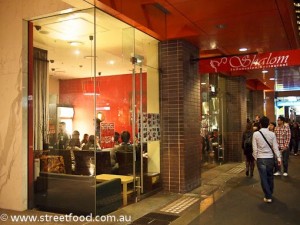
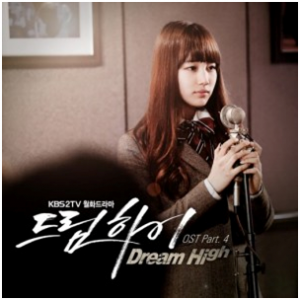
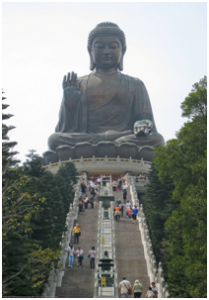
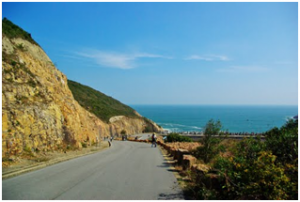

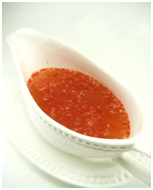
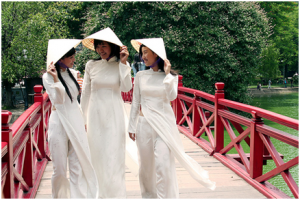



Latest Comments